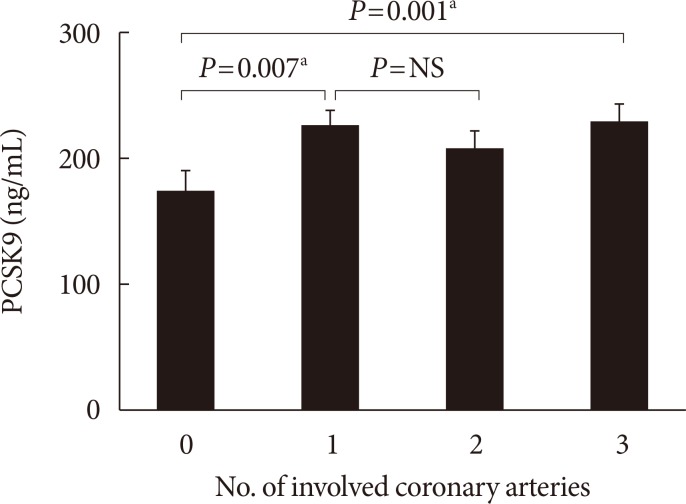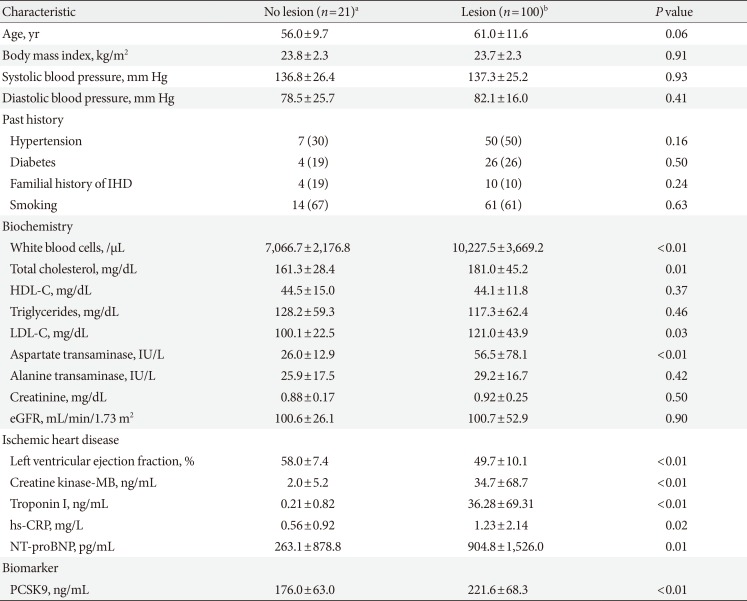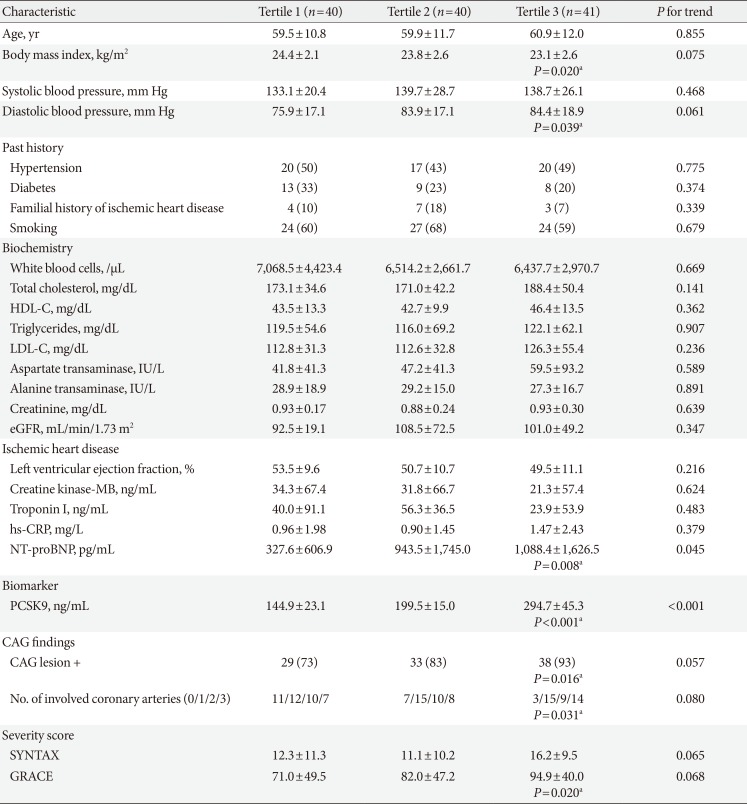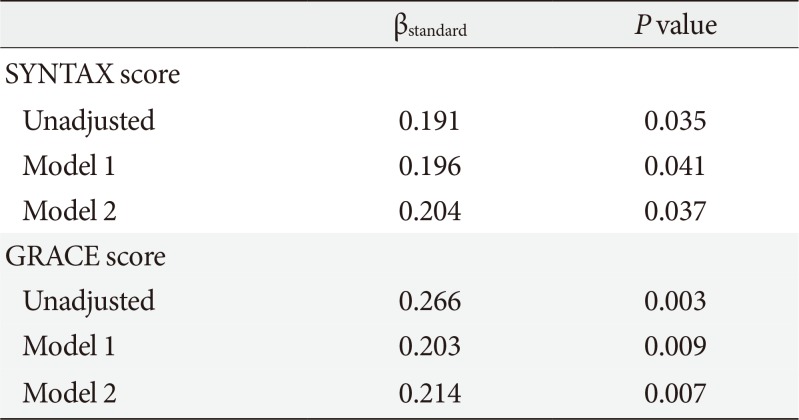Abstract
Background
Methods
Results
ACKNOWLEDGMENTS
References
Fig. 1
Associations between serum proprotein convertase subtilisin/kexin type 9 (PCSK9) concentrations and numbers of involved arteries identified by coronary angiography. NS, not significant. aP<0.05.

Table 1
Baseline clinical characteristics of study participants with and without coronary angiographic lesions

Values are presented as mean±standard deviation (which were compared by Student t-tests) or number (%) in each category (which were compared by chi-square tests).
IHD, ischemic heart disease; HDL-C, high density lipoprotein cholesterol; LDL-C, low density lipoprotein cholesterol; eGFR, estimated glomerular filtration rate; hs-CRP, high-sensitivity C-reactive protein; NT-proBNP, N-terminal pro-B type natriuretic peptide; PCSK9, proprotein convertase subtilisin/kexin type 9.
aNo lesion, no coronary arterial lesion at coronary angiography, bLesion, one or more coronary arterial lesions at coronary angiography.
Table 2
Baseline clinical characteristics of study participants stratified into tertiles according to serum levels of PCSK9

Values are presented as mean±standard deviation or number (%).
PCSK9, proprotein convertase subtilisin/kexin type 9; HDL-C, high density lipoprotein cholesterol; LDL-C, low density lipoprotein cholesterol; eGFR, estimated glomerular filtration rate; hs-CRP, high-sensitivity C-reactive protein; NT-proBNP, N-terminal pro-B type natriuretic peptide; CAG, coronary angiography; SYNTAX, SYNergy between percutaneous coronary intervention with (paclitaxel-eluting) TAXUS stent and cardiac surgery; GRACE, Global Registry of Acute Coronary Events.
aP value of tertile 3 (highest PCSK9) compared with tertile 1 (lowest PCSK9), determined by Student t-tests for continuous variables or chi-square tests for categorical variables.
Table 3
Odds ratios for the presence of one or more coronary angiographic lesions in patients in different PCSK9 tertiles

Odds ratios were calculated for the presence of one or more coronary angiographic lesions in patients in tertile 2 and tertile 3 compared with tertile 1. Multivariable logistic regression model 1 included adjustment for age and body mass index (BMI). Multivariable logistic regression model 2 included adjustment for age, BMI, past history of hypertension and diabetes mellitus, familial history of ischemic heart disease, and smoking.
PCSK9, proprotein convertase subtilisin/kexin type 9; OR, odds ratio; CI, confidence interval.
aP value of tertile 3 (highest PCSK9) compared with tertile 1 (lowest PCSK9).
Table 4
Associations between serum PCSK9 concentrations and scores indicating the severity of coronary artery occlusion

| βstandard | P value | |
|---|---|---|
| SYNTAX score | ||
| Unadjusted | 0.191 | 0.035 |
| Model 1 | 0.196 | 0.041 |
| Model 2 | 0.204 | 0.037 |
| GRACE score | ||
| Unadjusted | 0.266 | 0.003 |
| Model 1 | 0.203 | 0.009 |
| Model 2 | 0.214 | 0.007 |
Multivariable regression model 1 included adjustment for age and body mass index (BMI). Multivariable regression model 2 included adjustment for age, BMI, past history of hypertension and diabetes mellitus, familial history of ischemic heart disease, and smoking.
PCSK9, proprotein convertase subtilisin/kexin type 9; SYNTAX, SYNergy between percutaneous coronary intervention with (paclitaxel-eluting) TAXUS stent and cardiac surgery; GRACE, Global Registry of Acute Coronary Events.




 PDF
PDF ePub
ePub Citation
Citation Print
Print



 XML Download
XML Download